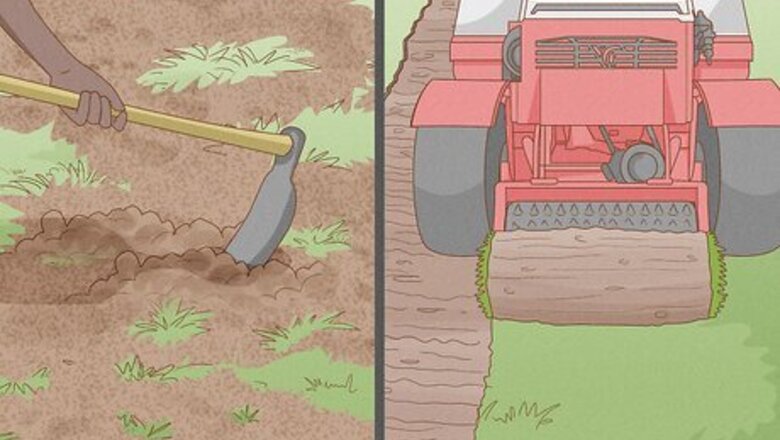
views
Caring for a New Lawn
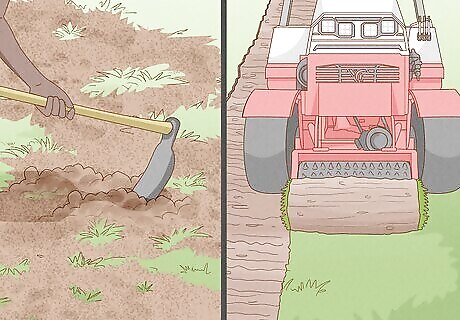
Prepare the area for planting. If you haven't installed your lawn yet, read our detailed guide, or follow this basic checklist to get started: Remove old grass and weeds using a grape hoe or sod cutter. If necessary, apply glyphosate or another broadleaf herbicide to remove these weeds. Follow label instructions and wait the required time after applying before breaking and prepping the soil. Grade your soil to a 1 or 2% slope running away from buildings. Perform a soil test or send soil samples to a local university extension or a garden center that offers soil testing services. Improve soil if necessary based on soil test results, then gently rake in starter fertilizer. Water the soil and let settle for one week. Fill a garden roller ⅓ full of water and roll lightly over the soil.
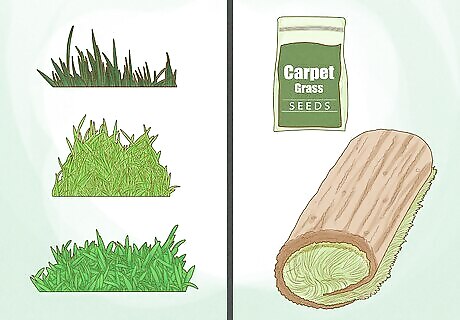
Choose your grass. Take your time selecting a grass species. Lawn care will be much easier if the grass is suited to your climate, soil type, and use patterns. Research the specific species, not just "cool season" or "warm season" grass. You'll also choose between seed and sod (turf). Seed is cheaper and easier to install, but can take months to become usable. Pick sod if you want a lawn sooner, and are willing to spend the time and effort. Sod should be moist, with no dry or cracked areas.
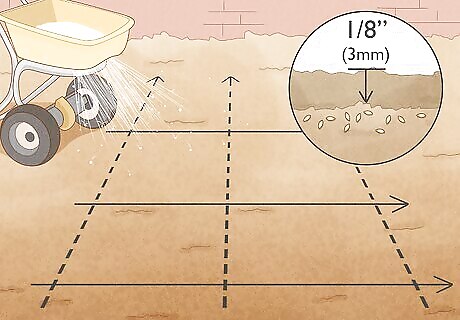
Install the new lawn. Break up the lawn into sections to make this task more manageable. Follow these instructions: To plant seeds: Using a lawn spreader, sow half the seeds walking in parallel rows. Sow the other half in rows at right angles to the first rows. Lightly rake ⅛ inch (3 mm) of soil over the seeds. To install sod: Remove a few inches of soil, so the new sod will end up level with the surrounding area. Lay the sod end to end in staggered rows, as though laying bricks. Trim edges to fit with a utility knife.
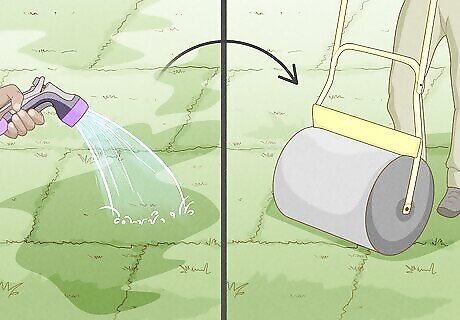
Water the new lawn. Follow these guidelines to keep a new lawn healthy: Seeds: Water right after sowing, lightly to avoid washing away the seeds. Repeat every other day or as often as needed to keep the soil moist, as seeds may die when dried out. This danger has passed once the seed has germinated and grass blades appear, usually about 10–14 days after planting. Sod: Water well after installing, then use a full lawn roller to compact the sod against the soil base. From then on, water in the early morning 10 days. Water heavily enough to wet the soil underneath the sod, but avoid overwatering that can lift the sod rolls up from the soil.
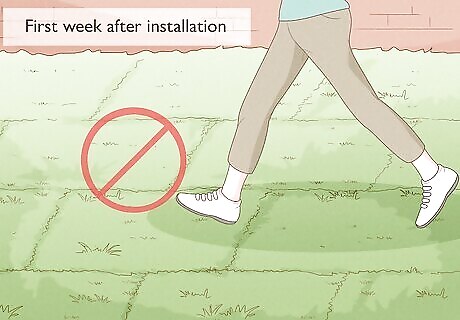
Stay off the new lawn. Avoid walking on new sod for the first week after installation, and go easy on it for the first month. Seed takes longer to become established. Stay off it until blades appear, then use as lightly as possible for six months. Once a seed-grown lawn reaches a height of 2–3 inch (5–7.5cm), roll it with an empty garden roller. Do not mow a seed-grown lawn until it is 3 or 4 inches (7.5–10cm) tall, then mow no more than ½ inch (1.25 cm) every few days until the lawn is healthy and well-established.
Maintaining an Established Lawn
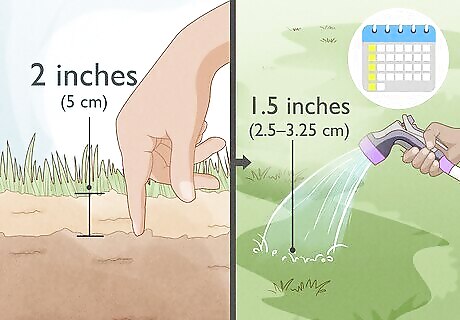
Water occasionally but deeply. Deep roots keep your lawn healthy and lush. Promote root growth by watering heavily, then letting the top 2 inches (5cm) of soil dry out before watering again. The exact amount of water per week depends on the grass variety and weather. A good rule of thumb for the growing season is 1–1.5 inches (2.5–3.25 cm) of water per week, rising to 2 inches (5cm) during hot, dry weather. Water in late evening or early morning to reduce water loss from evaporation. To find out how many inches of water your sprinkler uses, set up open containers around your yard. Run the sprinklers for 20 minutes, then measure the depth of water in each can. Multiply the average depth by three to find the inches per hour.
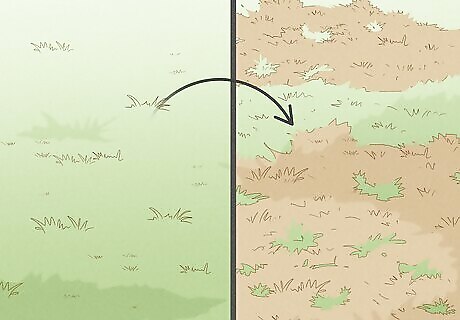
Let your lawn grow dormant (optional). Many grass species survive hot, dry summers by going dormant. Their leaves turn brown, but the parts undergrounds stay alive for months. If your lawn wilts and turns brown no matter how much you water it, letting it go dormant can be healthier than repeatedly rescuing it from the brink. Most dormant grass does not need watering. If the soil is extremely dry or the grass species does not do well in hot weather, give the lawn 0.25–0.5 inches (6–12mm) water every 2–4 weeks.

Mow at the highest setting on your mower. Cutting grass to a tall height (around 3 ⁄2 to 4 inches (8.9 to 10.2 cm)) is important for lawn health, especially during summer heat. Taller grass shades the ground, which blocks weed sprouts and promotes beneficial microbes. Leaving the grass tall also allows your lawn to focus on root growth, which adds disease resistance. Leave the grass clippings on the lawn after mowing to return the nutrients to your lawn. Do not mow within a week of planting new grass. The grass will not have time to grow deep enough roots and can be pulled up by the mower. Never mow a wet lawn. The slippery grass could cause an accident, and some mowers will not work as efficiently. Sharpen your mower blade after about 10 hours of mowing, or if fresh-mowed grass looks ragged with brown tips. If you hate the look of a tall lawn, you may reduce the height as low as 2 inches (5cm). Some grass species handle this better than others, but all prefer 3 inches (7.5cm) or above. Never remove more than ⅓ of the grass height at a time. You may need to cut some lawns every two or three days in spring to keep it at the right height. Mow in a different direction or pattern than your last mow to help the grass grow more evenly.
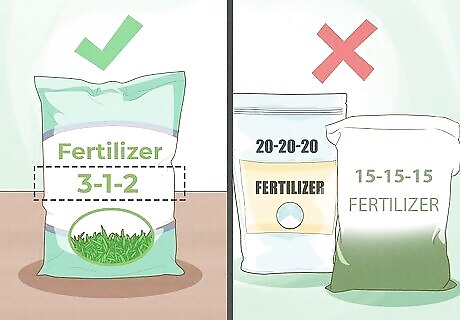
Choose a fertilizer. The three numbers on the fertilizer bag tell you the percentage of nitrogen, phosphorus, and potassium, in that order. Nitrogen is the most important for your lawn, and should be higher than the other two (a 3:1:2 ratio is ideal). Avoid numbers higher than 10, since these can easily burn your lawn. Ideally, choose a mixture of 30–50% slow-release fertilizer and 70–50% fast release fertilizer. This gives the lawn an instant boost, but still slowly adds more nutrients over the next few weeks. Organic fertilizers are better than synthetic fertilizers, since they improve soil health as well.
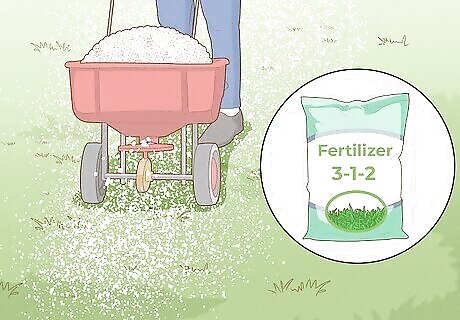
Fertilize your lawn. If you don't have a fertilizer spreader, rent one from a tool rental company. A drop spreader works best for small lawns. A broadcast (rotary) spreader saves time when fertilizing large lawns, but must be kept away from lawn edges, water sources, and vegetable and flower gardens to avoid pollution. Follow instructions on the spreader and your fertilizer packaging to apply 1 lb of nitrogen over every 1,000 square feet of lawn (0.5 kg / 100 m). Do this once a year, preferable in late fall when the cool weather promotes root growth instead of leggy growth. To avoid stripes of uneven color, set the spreader to ½ the recommended setting and walk over the lawn twice, in two sets of rows at right angles to each other. Put on gloves and hand spread fertilizer in corners, edges and small, tight areas to avoid spreading fertilizer outside the lawn. If you want the perfect lawn, you may fertilize three or four times per growing season. It's easy to burn your lawn or cause excessive quick growth with this strategy. For best results, contact a local university extension for advice specific to your climate. EXPERT TIP Scott Johnson Scott Johnson Landscape & Design Consultant Scott Johnson is the Owner and Lead Design Consultant for Concrete Creations, Inc., an award-winning landscape and design company based in the San Diego, California metro area. He has over 30 years of experience in the pool and landscape construction industry and specializes in large estate outdoor environment construction projects. His work has been featured in San Diego Home & Garden Magazine and on Pool Kings TV Show. He earned a BS degree in Construction Management with an emphasis in Architecture and CAD design from Northern Arizona University. Scott Johnson Scott Johnson Landscape & Design Consultant Our Expert Agrees: To maintain a healthy lawn, make sure your grass gets at least an inch of water every 3 days, mow it once a week, and fertilize it every 8 weeks during the growing season. Also, check your sprinkler system to make sure it's distributing the water evenly across your lawn.
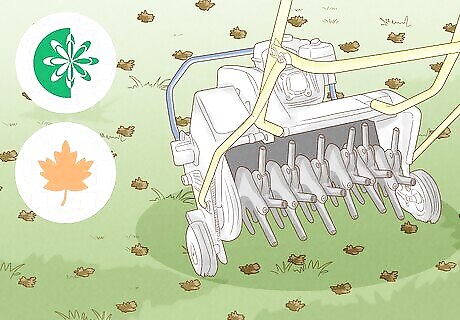
Aerate your yard in fall or spring. Annual de-thatching and aeration is very important for the health of your lawn. Once a year, remove plugs of soil using a lawn aerator with ½ in (1.25 cm) diameter tines. Remove them to a depth of 3 inches (7.5cm), passing over the lawn until you have about 8 plugs per square foot (88 per square meter). This fights soil compaction, disease, and thatch buildup. Aerate while the soil is on the dry side, but just wet enough to allow the tines to penetrate. EXPERT TIP Tony Hoang Tony Hoang Landscaping Manager Tony Hoang is a Landscaper and the Principal at H&J Landscaping & Concrete Contractor in Newark, CA. With over six years of experience, he specializes in designing the perfect concrete driveways & backyard patios for homes. H&J Landscaping & Concrete Contractor is a 4.5-star business on Yelp. Tony Hoang Tony Hoang Landscaping Manager Aerate lawns in spring and fall when actively growing. The best times to aerate your lawn are late spring when it starts growing again or early fall when grass is still actively growing. You don't want to aerate when the lawn has disease, is stressed by heat, or has pest problems. The ideal timing can vary based on your location and the normal length of the growing season there.
Troubleshooting an Unhealthy Lawn
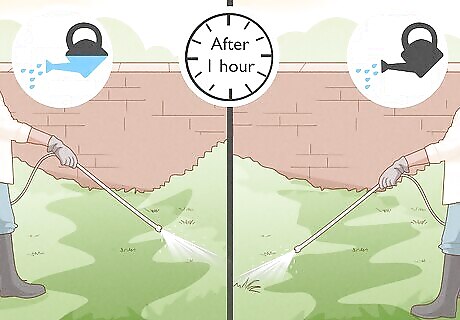
Deal with water runoff. If water runs off the lawn, you likely have clay soil or a steep slope. Give the lawn half as much water as usual, wait one hour for water to drain, then give it the other half. Stick to this system for all areas where runoff is an issue. Heavy clay soils require even deeper and less frequent watering than a normal lawn. Aerating your lawn can help if your soil feels dense and compacted..
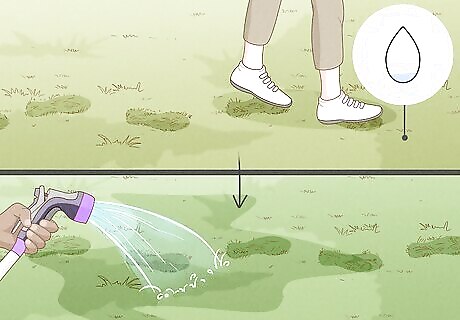
Respond to drying lawns. If your lawn wilts; turns a little grey, purple, or blue; or holds the impression of footprints, it's on the dry side. Increase the amount of water you give it each session. Dry lawns can also be caused by sandy soil, which drains too quickly for the lawn to absorb the water. Water sandy areas more often to make up for this, with less water per session.
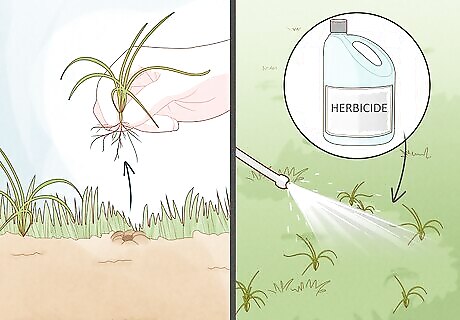
Fight weeds. The best way to fight weeds is to maintain a good, thick and healthy turf with its own natural defenses. Most weeds can be treated with basic changes to your lawn care, such as a higher mowing height or a change in watering schedule. If weeds are still a problem, pull them by hand and seek advice from local gardeners and university extensions. Chemical herbicides should be a last resort due to the risks of pollution and damage to surrounding plants. If you decide to use an herbicide, always follow the label instructions exactly. Following local advice tailored to specific weeds will give best results. When choosing an herbicide for an existing weed problem, choose a postemergence herbicide. Selective herbicides kill specific species, while nonspecific herbicides will kill your lawn as well and must be applied very precisely. If you use a lawn spreader or other equipment to spread herbicide, traces may remain on the equipment and spread to other areas of the garden.

Fight insects and other pests. If lawn grubs, beetles, or other pests are eating your lawn, the best approach is usually a change to your lawn care. A local university extension can help you fight pests local to your area — and tell you which pests are actually harming your lawn. Pesticides and insecticides should be a last resort only, as they can kill beneficial soil microbes and earthworms. If you do decide to use them, follow label instructions exactly. Pesticides can also be dangerous for the person applying them. Wear protective equipment as instructed by the label. After application, wash your skin and clothing thoroughly before eating, drinking, or smoking.
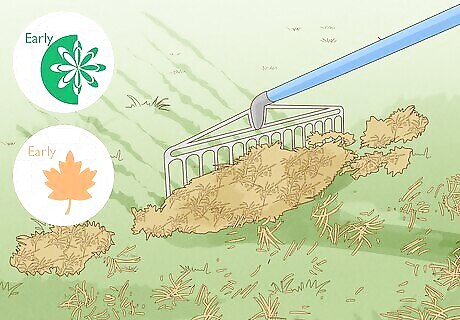
Prevent thatch buildup. Thatch, the spongy layer of brown material atop the soil, can cause issues if allowed to grow past 0.5 inch (1.25cm) thick. Rent a thatch removal machine to break it apart, and leave the thatch to decompose on the lawn. Once the thatch is gone, topdress the lawn with a sprinkle of soil — but always use the same soil the lawn was planted in. Remove the thatch in early fall or very early spring only. Do not remove thatch less than 0.5 inches (1.25 cm) thick. Thatch buildup can also be caused by poor drainage. Aerating the soil as described above can help. Contrary to popular belief, grass clippings do not contribute to thatch growth.
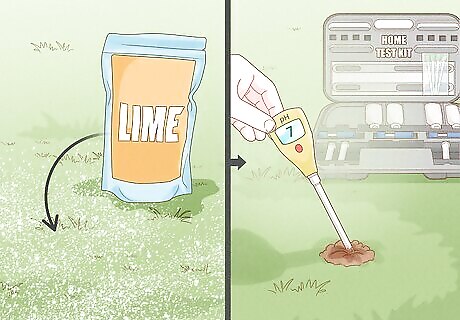
Adjust soil pH and nutrients. In many areas, including most of the Eastern US and Midwest, soil is too acidic and needs a light annual sprinkling of pelletized calcium carbonate lime. For a more accurate approach, conduct a soil test and adjust pH until it is between 6.0 and 7.0. Your soil test kit may also indicate nutrient deficiencies, such as low phosphorus or iron, which can be adjusted with a different fertilizer or soil addition products. Any time of year is fine for liming. If your soil is too alkaline, lower the pH with sulfur gardening products.

Care for a diseased lawn. The practices above all help your lawn resist disease. If you see discolored grass or other signs of disease, try to identify the specific disease and ask a local expert for advice on lawn diseases in your area. There are a couple steps you can take that will help fight most diseases: Avoid excessive watering. The grass should never be soaked or swampy. Switch your watering schedule to after midnight or in the early morning. Water applied in the early evening does not go through evapotranspiration, and stands on the turf instead. This can promote fungus and diseases, such as red thread fungus in perennial rye. Shake off dew drops on the grass with a quick hose spray, or by dragging the hose over the top. Some "dew" is actually sugary water exuded by the plant, which microbes can feed on.
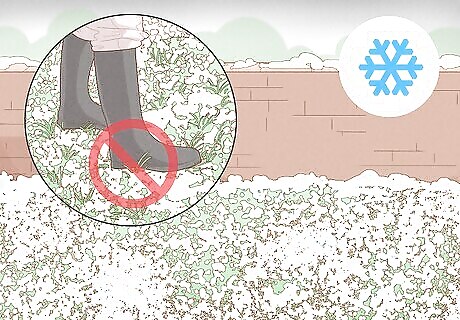
Reduce use of struggling lawns or lawns in winter. Any time your lawn looks damaged, minimize the amount of foot and vehicle traffic until it returns to health. The same applies to lawns during frost, which are especially vulnerable.










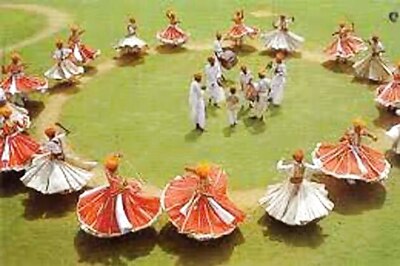
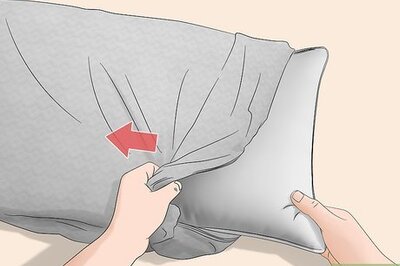

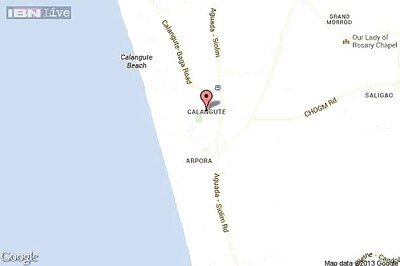




Comments
0 comment